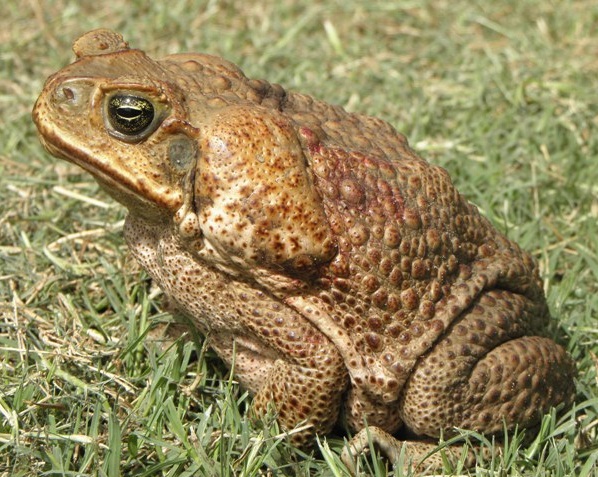Cane Toad
Scientific Name – Rhinella marina
Classification – Bufonidae
Baby Name – Tadpole
Collective Noun – Knot, lump, nest, or knob
Average Length – 10 to15 cm; largest recorded specimen measures 24 cm (9.4 in)
Average Weight – Largest recorded specimen measures 1.3 kg
Life Expectancy – 10 to 15 years (in wild); up to 35 years (in captivity)
Breeding Season – Anytime of the year
Incubation Period – 1 to 3 days
Metamorphosis Period – 1 to 2 months
Special Features – Dry and warty skin; marked ridges above the eyes running down the snout; a large parotid gland appears at the back of each eye; base of the toes have fleshy webbing
Family Unit – Lives in groups during the day and is solitary at night
Geographical Distribution – United States, Central America, and tropical South America (native); Oceania, Caribbean and northern Australia (introduced)
World Population – Increasing
Conservation Status – Least Concern
Natural Habitat – Subtropical forests, open clearings in urban areas, grassland, woodland
Diet – Insects, beetles, ants, winged termites, honey bees, crickets, bugs, small rodents, birds, smaller toads
Predators – Caimans, snakes, fish

